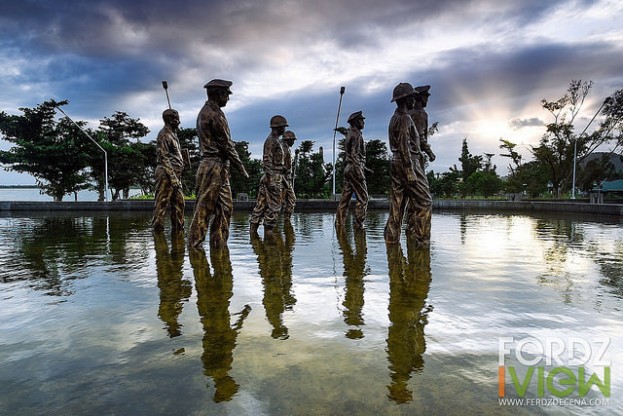I have this misconception that Full-frame cameras are humongous DSLR monsters where one have to take an extra effort to bring it to trips. I was recently asked to test out the latest of the Nikon DSLR FX-format, the Nikon D750. I was pretty surprised by how light it was basing it on the body itself. I’ve been using the DX-format Nikon D7100 for a couple of months already and I actually found the D750 slightly lighter and much solid in construction. That is until I fitted the camera with the Nikon 24–140mm f4 lens which is the standard kit. I had a scheduled trip to Tacloban and I thought it was the perfect time to try the camera.

The Nikon D750
The Nikon D750 sits in the middle pack of Nikon’s FX line just in between the budget D610 and the high-spec D810. Being in the middle of the pack may bring some confusion to the buying public. Looking at the specifications it is definitely much higher than the D610. In some occasions there are key features that’s making it a competitive choice for the D810 buyers like faster frame rate, improved autofocus, tilting screen, built-in wifi and slightly better battery life. Here’s a rundown of some of the camera’s key features.
- 24MP Full-frame CMOS sensor (with AA filter)
- Flip up/down 3.2″ 1,229k-dot RGBW LCD screen
- 6.5 fps continuous shooting
- Improved 51-point Multi-CAM 3500FX II AF system (sensitive to -3EV)
- 91,000-pixel RGB metering sensor with face detection and spot-metering linked to AF point
- Built-in Wi-Fi
- 1080/60p video recording
- Simultaneous internal recording and HDMI output

In the Field
One week with the Nikon D750 is a little time to fully utilize all the features. Instead, I focused on what I primarily need my camera for, some still people shots, occasional streets and a few video. I had the Nikon 24–120mm as my walk around lens but I also have my DX lenses like the Sigma 10–20mm and a Nikon 35mm 1.8. So imagine me switching modes from FX to DX in different occasions. Tacloban at that time had a bipolar weather. And at the tail-end of the trip, I had to deal with the preparations of Typhoon Ruby. So my shoots were a mix of people, interiors, food and street.
I liked that Nikon has streamlined its interface. I had no trouble using the D750 coming from the D7100. What I just had to be aware of is the sensor format. There’s this outline on the viewfinder for the DX format. On live view mode it shows the actual coverage of the image. But live view is pretty useless for me when shooting still as it is pretty slow, it is much better for videos.
I had an occasion where I had to use the burst mode, chancing upon a group of kids enjoying jumping by a small pier. The 6.5fps was pretty useful though I had a personal error not trying to use the Continuos-AF to get sharper images on focus for the jumpers. High ISO was also put into test when I entered the elegant but challenging low-light conditions of the rooms at Imelda Shrine but it did yield useful to acceptable high ISO shots.





Leave a Reply